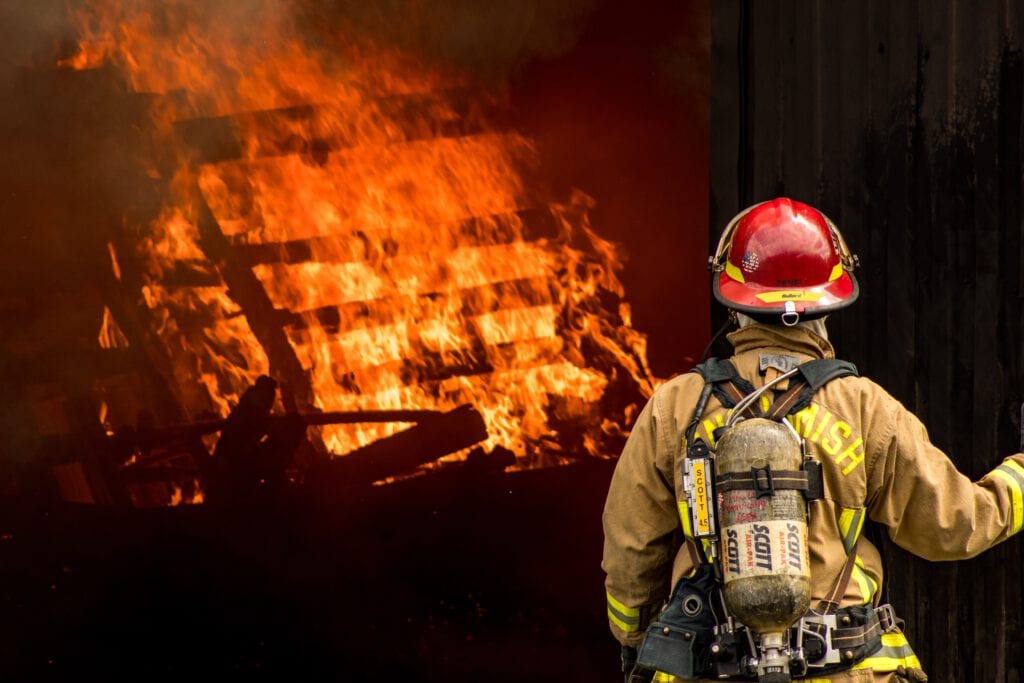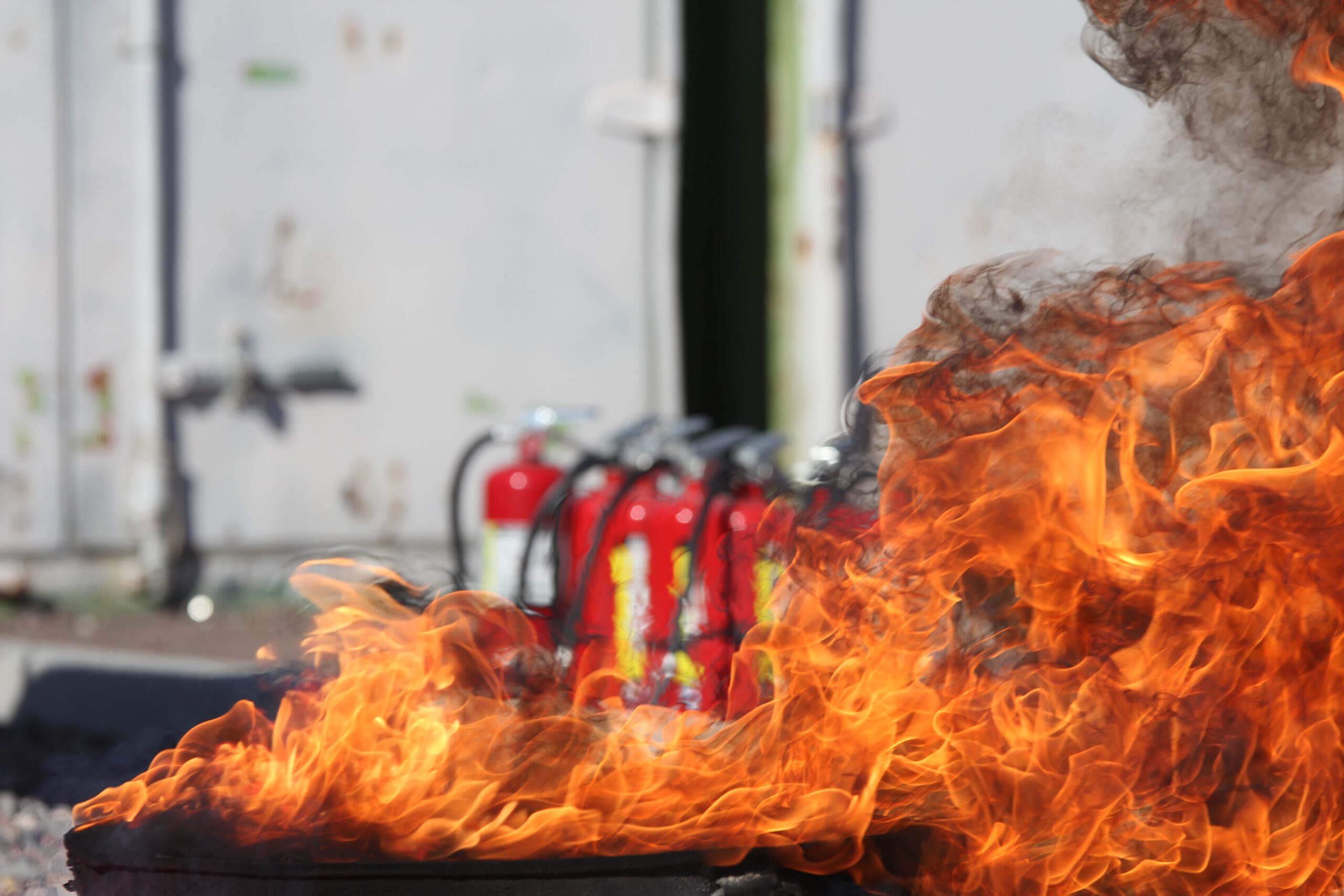Everyone’s instinct is to put out a fire with water. In some cases, water can spread the fire more. It’s important for everyone to know about fire classifications because not all fires are extinguished the same. There are 5 different fire classes. A, B, C, D, and K. The classifications group fires by what material is burning, which determines the most safe and effective method of extinguishing.
Fire Classes
Class A
The most standard type of fire. These fires are fueled by common combustible items, such as wood, paper, rubber, and some plastics. Class A fires are safely extinguished by water or dry chemical powder. You can also use a Class A fire extinguisher.
Class B
These fires are fueled by flammable liquid. Gasoline, natural gasses, oil paints, and alcohols are all considered Class B fires. Water should NEVER be used to extinguish a Class B fire. “Oil and water don’t mix”, as the old saying goes. Using water on to extinguish a Class B fire will only spread the oil, allowing the fire to spread quicker. In the event of a Class B fire, use a Class B rated fire extinguisher. These extinguishers contain dry chemical or carbon dioxide.
Class C
Class C fires are classified by electrical fires. Electrical fires can be caused by malfunctioning monitors, computers, or other malfunctioning electrical equipment. Class C fires can be fatal to fight with water, as electricity may be conducted through the water and to the firefighter. Class C fires should be extinguished with Class C fire extinguishers, which may also contain dry chemical or carbon dioxide.
Class D
Class D fires are flammable metals, like ones found in fireworks. Class D fires can be difficult to extinguish because you may not know which metal is burning. Dry powder extinguishers are the most effective way to extinguish Class D fires, as many other extinguishing methods may make the situation worse. Combustible metals also prove to be less of a fire risk in masses because they transfer heat effectively, meaning it takes more heat overall to keep the fire going. Make sure you’re using a Class D rated fire extinguisher, as other extinguishers may make the fire worse.
Class K
These fires are similar to Class B fires, as they’re both forms of flammable liquid or oil, but Class K fires differ from Class B fires because their liquids have higher flashpoints, meaning they’re less flammable. Class K fires are normally caused by cooking oils and fats. Due to the nature of these fires, Class K fires are normally found in commercial kitchens. Like Class B fires, it’s important to never spray water onto a Class K fire. Water can spread the oil and make the fire worse. As with all other fires, use appropriately rated K fire extinguishers to ensure the fire is extinguished safely.

Extinguishing Fire Classes
Speaking of properly rated extinguishers, how can you tell which fire extinguisher is safe to use on which fire classes? Thankfully, fire extinguishers have the fire classes they’re rated for written on the side. This makes it easy to identify if the extinguisher is safe to use at a glance.
Does this mean I need to have one of every type of fire extinguisher in my house? No! Classes A, B, and C are very common types of fires in homes. Class D and K fires are less common and harder to extinguish, so it’s far easier and safer to call 911 and let professionals extinguish the fire.
Okay, so I just need 3 different types of fire extinguisher? Still a no! Class A, B, and C fires all have something in common. They can be effectively fought with with a monoammonium phosphate dry chemical, or an ABC dry chemical. ABC extinguishers are the most recommended type of fire extinguisher for home use because it safely extinguishes 3 common fire classes. Just remember to refill or replace your fire extinguisher after each use!
Even if you know your fire classes, you should always call the proper authorities.
Even if your fire is safely extinguished and there doesn’t appear to be any damage to the home, there may still be soot particles in the air around the house. To learn more about the negative effects of soot, check out our last blog post here. In the event that any fire has occurred in your home, you should have a professional company restore your belongings. Sole Source’s 24/7 line can be reached at 401-712-2700.


